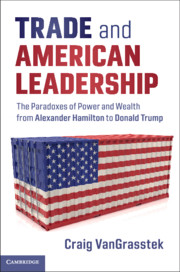 Trade and American Leadership
Trade and American Leadership Book contents
- Trade and American Leadership
- Trade and American Leadership
- Copyright page
- Dedication
- Contents
- Figures
- Tables
- Foreword
- Preface
- Acknowledgments
- Abbreviations
- Part I Introduction and Overview
- 1 The Domestic Diplomacy of Trade and the Paradoxes of Power and Wealth
- 2 The Theory and Practice of the Anglo-American Hegemonies
- 3 After Hegemony: Power, Wealth, and Trade Policy since the Cold War
- Part II The Domestic Diplomacy of Trade
- Part III Trading with Allies
- Part IV Trading with Adversaries
- Part V Trading with Developing Countries
- Part VI Trade, Trump, and the Future
- Annotated Bibliography
- Index
3 - After Hegemony: Power, Wealth, and Trade Policy since the Cold War
from Part I - Introduction and Overview
Published online by Cambridge University Press: 05 January 2019
- Trade and American Leadership
- Trade and American Leadership
- Copyright page
- Dedication
- Contents
- Figures
- Tables
- Foreword
- Preface
- Acknowledgments
- Abbreviations
- Part I Introduction and Overview
- 1 The Domestic Diplomacy of Trade and the Paradoxes of Power and Wealth
- 2 The Theory and Practice of the Anglo-American Hegemonies
- 3 After Hegemony: Power, Wealth, and Trade Policy since the Cold War
- Part II The Domestic Diplomacy of Trade
- Part III Trading with Allies
- Part IV Trading with Adversaries
- Part V Trading with Developing Countries
- Part VI Trade, Trump, and the Future
- Annotated Bibliography
- Index
Summary
- Type
- Chapter
- Information
- Trade and American LeadershipThe Paradoxes of Power and Wealth from Alexander Hamilton to Donald Trump, pp. 59 - 86Publisher: Cambridge University PressPrint publication year: 2019
